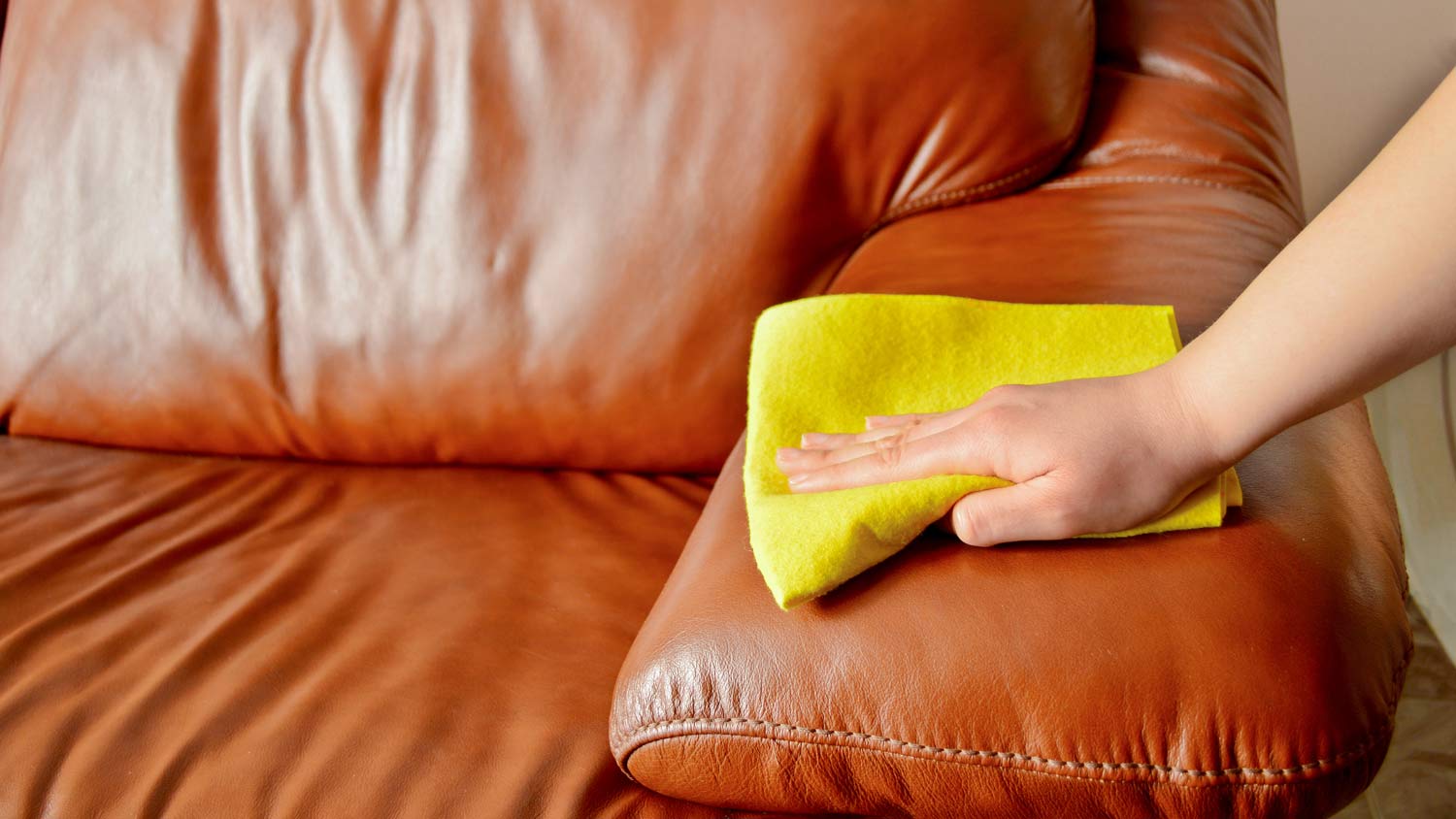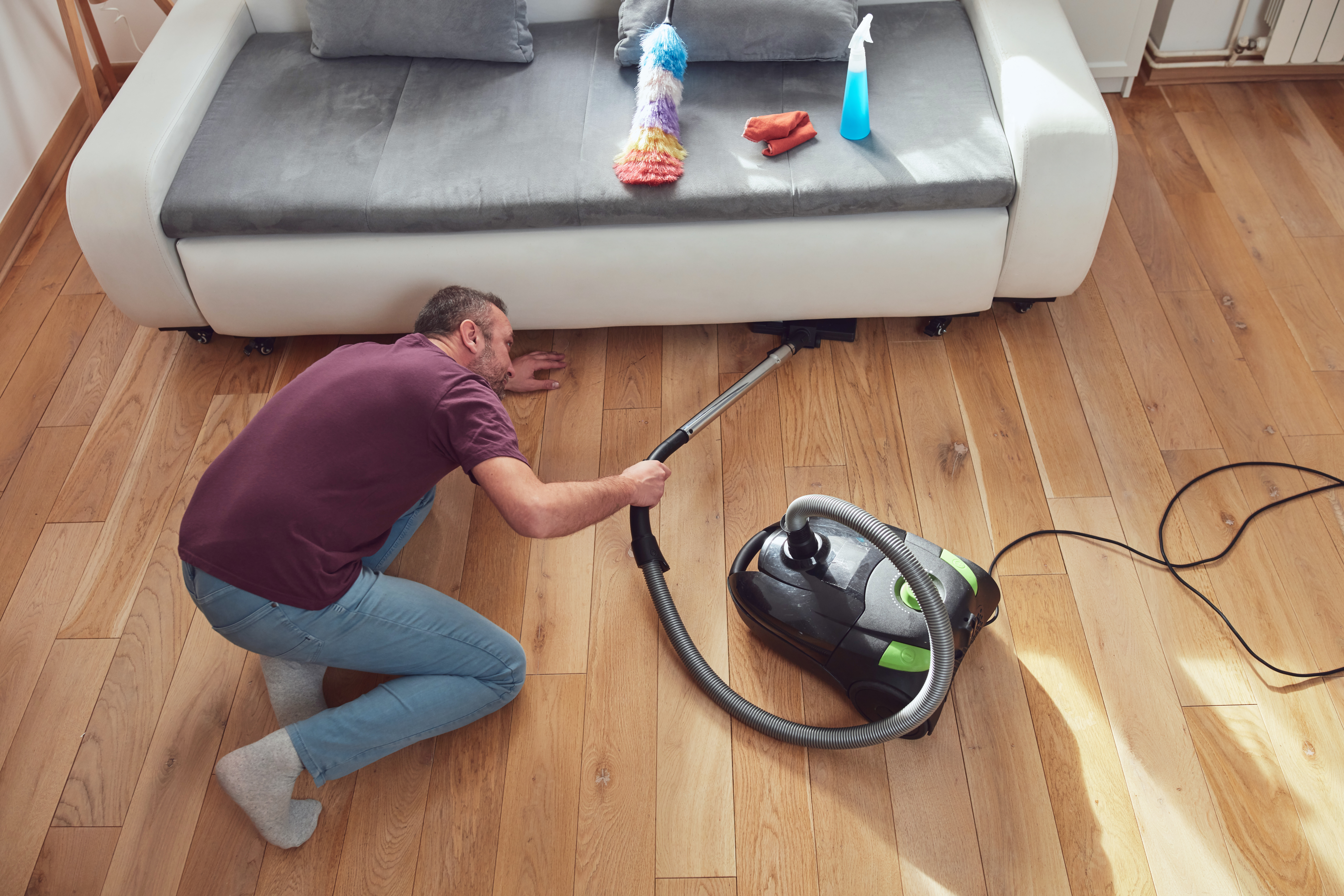
Discover upholstery cleaning cost estimates, including average prices, cost factors, and tips to help you budget for professional furniture cleaning.
Leave the steam for the sauna


Steam cleaning can significantly damage a leather couch.
Light routine cleaning will keep your leather couch feeling fresher.
Hiring a professional upholstery cleaning surface is highly recommended for heavier stains.
Professional leather cleaning costs $200 to $500.
Anyone with a steam cleaner may be tempted to steam their dirty couch, no matter the material. However, leather and water don't mix well—especially when you add heat to the equation. So, before you grab your steamer, knowing if this is the best approach for your particular purpose is essential. And if not, no problem—we provide alternative ways to clean your sofa.
While many types of upholstered furniture can be steam cleaned, leather is an exception. As a natural material, leather is highly sensitive to heat and moisture—the key elements of steam cleaning.
When you steam leather, it can quickly shrink, warp, and even discolor. Worse, prolonged exposure will strip the leather of its natural oils, leaving it dry and prone to cracking instead of soft and supple. Also, since leather is porous, steam can push dirt deeper into the material, making cleaning even more challenging.

Instead of using a steam cleaner, there are a few safer alternatives to keep your leather couch looking its best.
Routine cleaning and regular maintenance will keep any home feeling fresh. A weekly dusting with a soft, dry cloth will remove surface dirt from your leather couch. To take it a step further, use a vacuum with a soft brush attachment to tackle crevices where dirt, crumbs, and pet hair tend to accumulate.
Another way to clean your leather couch is to lightly dampen a microfiber cloth with distilled water and then wipe the surface. Remember, unlike tap water, distilled water doesn't have chlorine, which can damage your sofa over time. After this step, grab a dry cloth and repeat the process to prevent water stains.
You can find leather furniture cleaning products at most home improvement stores. They remove light dirt without stripping the leather's oils. Following the manufacturer's instructions, it's a good idea to test the solution in an inconspicuous area first. Typically, you’ll apply the cleaner using a soft cloth in circular motions and then immediately wipe it off with a clean, dry rag.
Hiring a local upholstery cleaning service is your best option for heavily soiled or stained sofas. These professionals have the specialized training, products, and tools to remove dirt, stains, and unpleasant odors effectively. Most importantly, they can restore your leather sofa’s natural beauty, keeping it soft and supple. While fabric upholstery cleaning typically costs around $175, leather cleaning can range from $200 to $500.
From average costs to expert advice, get all the answers you need to get your job done.

Discover upholstery cleaning cost estimates, including average prices, cost factors, and tips to help you budget for professional furniture cleaning.

Wondering how much it costs to rent an upholstery cleaner? Get prices, cost factors, and money-saving tips for your next DIY upholstery cleaning project.

Over time, dirt, stains, and spots make furniture less appealing. Hiring a professional upholstery cleaner can restore your furniture back to top shape. Here’s how to find the perfect pro for the job.

What is upholstery cleaning? Learn what it is, and why it’s an important part of keeping your home clean and your furniture in good condition.

You can save a lot of money if you learn how to clean your suede couch yourself. The process is simple; follow these 8 steps.
.jpg?impolicy=leadImage)
When spills happen, it's helpful to know how to get rid of couch stains in a hurry. Check out these eight methods based on your couch's upholstery.